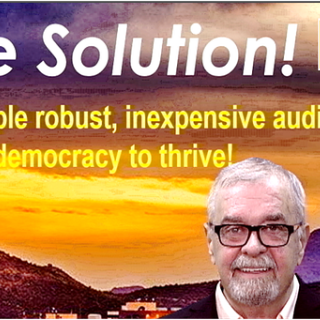Advertisement
This past Saturday morning, as a cool rain fell in the Near East of Columbus, a small group of get-out-the-vote canvassers huddled under a tree waiting for US Senate candidate Morgan Harper to show and give a pep talk.
Ohio’s most consequential statewide primary vote in recent memory was three days away, and her campaign workers had planted several fluorescent pink signs with “Morgan Harper” framed by the outline of Ohio.
Not far from here in an aging red-brick apartment building – that was once affordable – a window squeaked open. From inside someone shouted, “Who’s running?”
The group of canvassers and campaign workers sighed. If there’s one primary candidate that’s going to truly represent the Near East with meaningful policies, it’s Morgan Harper. But once again it appears the monster that is APATHY has risen to marginalize who is arguably the best candidate in both the Democrat and Republican primaries.
Because later that Saturday, both Matt Gaetz (R-Fla.) and Marjorie (Qanon) Greene (R-Ga.) were together just 40 minutes east of Columbus in Newark stumping for the Republican-primary frontrunner JD Vance, who may have made a deal with the devil.
Nonetheless, and even though her Democrat primary opponent Tim Ryan of Mahoning Valley has what many believe is an insurmountable lead in the polls, Morgan Harper jumped out of a late-modeled SUV to greet the canvassers.
“Where to start,” she began, reflecting on the previous nine months. “We launched in August, and just connected with so many people across the state. And I have said this at all the events over the last couple of days, [these] are heavy times.”
Harper brought up how Columbus Public Health had erected a memorial of flags outside its Parsons Avenue office remembering the 204 victims of homicide the community suffered in 2021.
“There is a sentiment across the state that something is off with us fundamentally, and where are we going from here?” Harper asked. “And I do think the campaign has been a great vehicle to give a people a vision of where we want to go, and that we can come together to accomplish things. And that we want to build community, and as probably anyone who interacted with me before, I very much believe in politics as being a vehicle for that.”
Harper addressed the lingering criticism that she’s too far “left” for Ohio.
“There’s this idea that Morgan Harper is too progressive for Ohio, but what’s funny is the media has kind of lost track of where the people of Ohio are at. Climate change is not really a controversial view. We have auto manufacturers across our state that are moving forward with electric vehicles. These are people who are not considered radical by any means. It’s just a reality of our life and that this is coming, and people are aware of it. And also, there’s a huge economic opportunity.”
Harper is seeking to expand Medicare to everyone, adding dental and vision coverage, improving addiction services and mental health care.
“For so long there’s this talking point that we ‘don’t want to turn into Canada, we’re going to have lines, and this and that.’ And so many people across the state, all different ages, because they like to paint these issues for the young only, but all different ages that are recognizing ‘we don’t want to live like this.’ We need regular access to mental healthcare, primary care, in rural areas, urban areas. And people are saying the same thing. It’s our mission to let people know we are not alone. We actually are all saying the same thing.”
Harper turns 39 in July and admitted that during the campaign there was still a “little piece of me” that wondered if her policies are right for all of Ohio.
“I’ve been all over the state, and I can say very confidently that this Democrat party idea that somehow what’s going on rural areas is so drastically different from what’s going on in urban areas is not true. Everyone is saying the same thing. And I feel, and I have grown more confident, that these are the views of the state. I have no confidence that the traditional Democratic party layers at the state level are ever going to catch up. So, we have to build outside of that. That’s not against the party, that’s just being real about what it’s going to take to move our politics in a different direction.”



